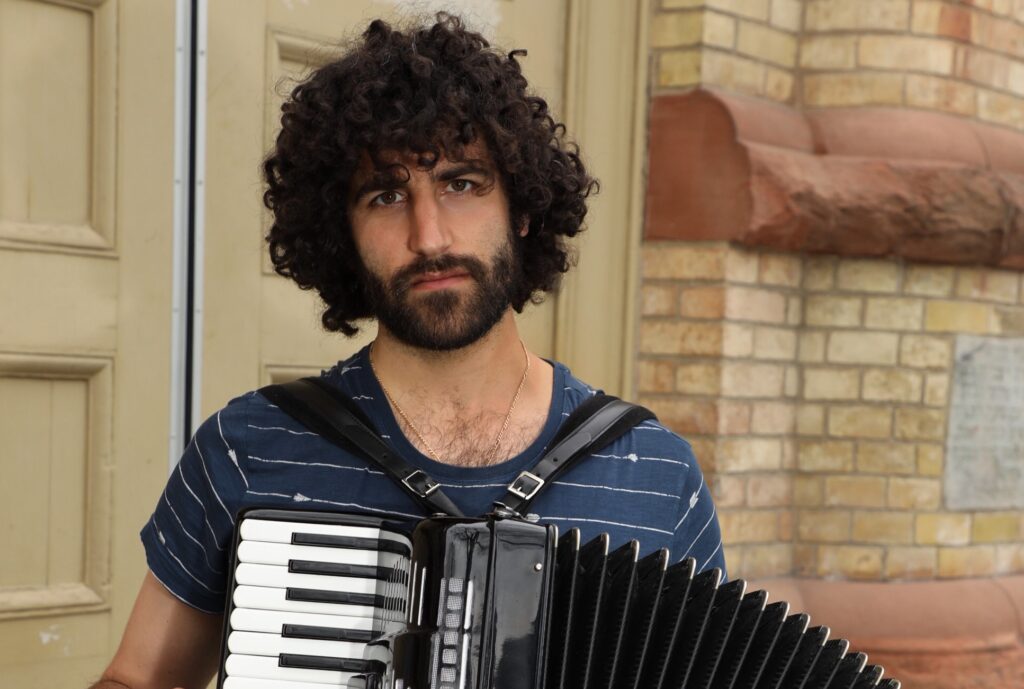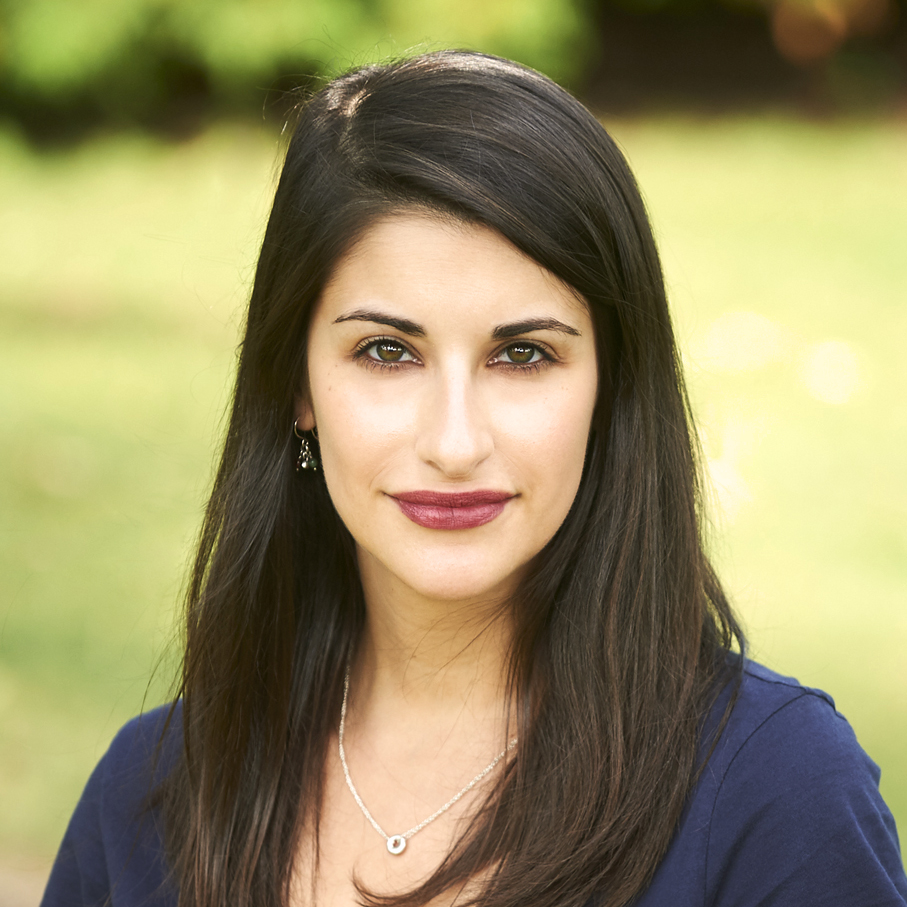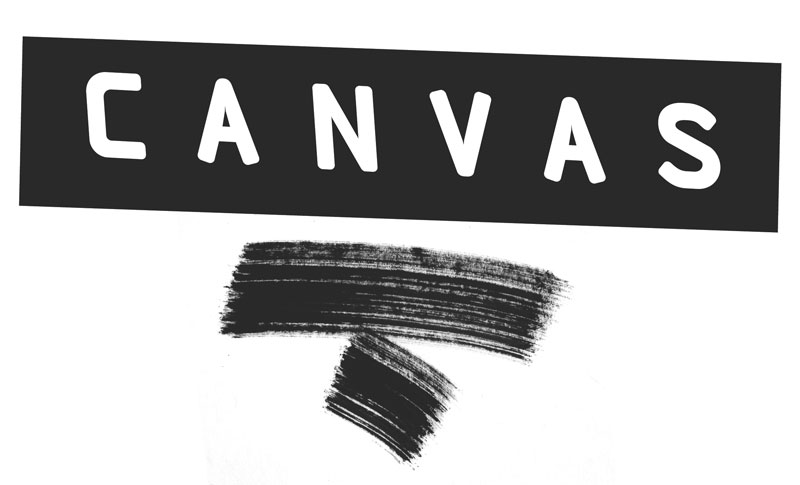Both& is a site-specific mural installation created for the Miles Nadal JCC by Toronto-based artist Bareket Kezwer. It is one of six works commissioned for the North America-wide project, Dwelling in the time of Plagues. Themed around the holiday of Passover, Dwelling in the time of Plagues is a Jewish creative response to real-world plagues of our time.
The works included in Dwelling in the time of Plagues will be displayed online at plaguedwelling.com, as well as at museums and sites in Baltimore, Boston, Charlotte, Detroit, New York, and Toronto. Collectively, the commissions in this constellation of art projects around North America grapple with contemporary crises such as the global pandemic, institutional racism, xenophobia, ageism, forced isolation, and the climate crisis.
Kezwer’s project asks viewers to question the framework of binary thinking (either/or). Using the ampersand symbol as a starting point, the artwork combines elements of English and Hebrew typography, as well as hand-drawn visual dualities. Holding this paradox is not only part of fulfilling the mitzvah (Hebrew word for “good deed”) of retelling the story of our exodus from Egypt into the land of Israel, but is also a lesson that can support us embracing the wholeness of life. This is especially the case as we navigate the uncertainty of this global pandemic.

Bareket Kezwer is a Toronto-based muralist, community art facilitator, curator, producer, and eternal optimist. Her work is motivated by a desire to spread joy, cultivate gratitude, and foster new social interactions. Using aerosol and acrylic paint as well as digital design, she works with bright colors and bold patterns to captivate people’s attention and fill them with delight. She is passionate about creating art that both aesthetically and psychologically brightens the streets.
Her belief that public art is a powerful tool for building community drives her practice. She is the founder and creative director of Women Paint, an annual street art event that has produced 80 murals celebrating the strength and diversity of women and non-binary artists and community members. Over the last seven years, she has created custom large-scale artworks for clients including The New Yorker, Tourism Canada, the City of Toronto, the City of Mississauga, the Consulate General of the Federal Republic of Germany in Toronto, Facebook, and Airbnb. Learn more at bareketkezwer.com
We interviewed Bareket, and discussed her artistic process as well as her mural now on view at the Miles Nadal JCC. Learn more about the artwork and the artist in the conversation below.

Kultura Collective: Tell us a bit about you and your artistic practice.
Bareket Kezwer: I’m a muralist, community engaged artist and facilitator, curator, cultural producer, creative director, graphic designer, frequent collaborator and eternal optimist. My multidisciplinary practice is motivated by a desire to spark joy, cultivate individual and collective gratitude, celebrate the power of kindness and compassion, and support the growth of inclusive and connected communities. In my murals, I work with bright colours and bold patterns to captivate people’s attention and fill them with delight.
I program and facilitate projects that engage people through creativity and increase representation of Toronto’s diverse population in the public realm. In 2017, I founded Women Paint, a street art jam celebrating the strength, resilience and diverse stories of women and non-binary artist and community members. As the initiative’s creative director, I have produced 80 murals by emerging and early career artists, and facilitated an intergenerational community mural and two mural camps with youth.
KC: What inspired your mural Both& for the Miles Nadal JCC?
BK: When I was initially approached to participate in this project, I was asked to think about what contemporary plague I wanted to respond to. Last year, the lockdown happened a few weeks before Passover. Since my family wasn’t able to celebrate together and zoom fatigue hadn’t set in yet, I decided to host a zoom seder. As the host, I prepared some remarks and that’s when I started reflecting on Passover being a holiday when we celebrate duality—specifically around freedom and slavery.
Duality asks us to use both/and thinking and this inspired me to create my piece in response to the “plague of binary thinking”. When we frame our thoughts in an either/or dynamic, rather than in a both/and dynamic, we limit the possibilities of life. Binary thinking requires people deny aspects of themselves and their reality to fit themselves into a limiting framework. When we can embrace the complex continuum instead of oversimplifying things into categories, we create more space to celebrate the wholeness of our authentic selves.

KC: How did you get involved with the Dwelling in the Time of Plagues project?
BK: I met Hillel Smith, the organizer of the Jewish Street Art festival, in 2019 when he invited me to participate in the first edition that was part of the Jerusalem Art Biennale. He invited me to participate in this project and I was excited about an opportunity to continue meeting international Jewish artists.
KC: How does your mural connect with the themes of Passover?
BK: Passover is a holiday when we hold the paradox of life—the inseparability and interdependence of seemingly contradictory phenomena. Slavery and freedom. Connection and alienation. Division and solidarity. Struggle and growth. Beauty and ugliness. Pleasure and pain. Simcha and sorrow. Holding this paradox is not only part of fulfilling the mitzva of retelling the story of our exodus from Egypt into the land of Israel, but also a lesson that can support us in our lives—especially as we navigate the uncertainty of this global pandemic.
The Hebrew word “seder”, the name for the ritual feast of Passover, means order. We practice the Passover traditions every year in the same order because they lead us on a storytelling journey from slavery to freedom. Freedom, in my humble opinion, is about storytelling. We can each find freedom by shifting our perspectives (from either/or to both/and) and rewriting the internal narrative of our life that keeps us enslaved in beliefs, behaviours or habits that do not nourish us and often create polarization.
Through the practice of retelling the same story of Passover, do we as Jews have an opportunity to explore the next frontier of freedom? By pausing to ask how we can relate differently to the story we retell yearly, can we create space from which to share our freedom and lift others up, while avoiding the trap of getting attached to a narrative of ourselves as victims?
At my seder last year, I learned that Maimonides said the most important thing about the seder is to ask the questions. “What is different about this night?” I hope this mural encourages people to ask not only what is different about this night, but what is different about this moment we’re living through? How do we want to show up differently than we have in the past?
Jews were told to stay inside while the angel of death passed over. After that, they emerged to begin their journey to freedom in the promised land. I invite each of us to ask, “what does the promised land we are moving towards look like when this plague passes and the angel of death is gone?” How do we want to rebuild as we recover from the pandemic?
We typically put out a seat for Eliyahu, this year, I invite each of us to ask, “who else is not at the metaphoric table?” Who can we invite to sit at our table to ensure everyone can experience freedom?
Every year, we sing “Diyenu”, and this year, the song feels extra relevant. I believe that honouring our freedom is an exercise in asking ourselves what it means to live a good life, and then living in integrity with our answers. Coming full circle to the idea of gaining freedom by rewriting our story—the first step in this change is to say enough. Enough people have been harmed by violence initiated by binary thinking. It’s time to use our freedom to advocate for a world where everyone is free.

KC: How has the pandemic affected the way you think about public art? How has it affected the way you work?
BK: The pandemic has reinforced my belief that public art is a powerful tool to strengthen the fabric of our city. During this time when most of our socializing is happening in the public realm, public art has become an even more important way for people to experience moments of connection and inspiration. Public art has a role to play in helping people remain hopeful that we can rebuild a stronger, more supportive world.
KC: What are you working on in your studio?
BK: In addition to getting ready to paint this mural, I’m also getting ready to paint 3 collaborative murals at Sunnybrook at the end of March. I’m planning an April break camp for girls and gender queer youth in Stratford. They’ll spend a week learning techniques and be guided through a collaborative design process. In May, they’ll have a chance to paint their design onto a shipping container at the Stratford Gallery. And I’m gearing up for the outdoor mural season. I’m designing a number of murals ranging in size from a garage door to a large loading dock and organizing the largest edition of Women Paint that will include 40+ artists.
KC: When you’re not painting, where are your top five Toronto spots to relax?
My top 5 places to enjoy a day off in Toronto are:
- Hanlan’s point
- Allan Gardens
- Kensington Market
- Sunnyside Boardwalk
- High Park

Both& will be on view at the Miles Nadal JCC from March 26 – May 16, 2021. Click here to learn more.
Opening event – March 25 at 8pm. Click here to learn more.
Mural conversation – March 31 at 7:30pm. Click here to learn more.
Make your own Both& window mural at home! Click here for the activity guide.







